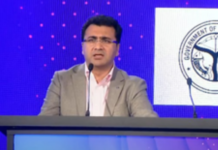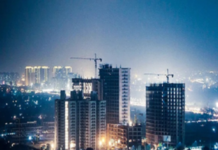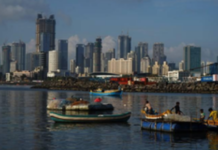By Kushagra Dixit
New Delhi–While a cluster of countries are virtually falling over each other to associate themselves with India’s ambitious Smart Cities mission — a noted UN specialist has cautioned that India should look for indigenous solutions as it can’t fall back on examples across the world.
“India cant be inspired by any example of anywhere in the world, because its so big, so unique and so different, that it has to invent its own way,” Yuri Afanasiev, the UNDP Resident Representative in India, told IANS on the sidelines of the just-concluded World Sustainable Development Summit (WSDS) held by TERI.
He identified water, city governance and technology gaps as the major challenges India faces.
India aims to build 100 smart cities while it’s believed that 70 per cent of the urban spaces for 2030 — one of the stages of the mission — are yet to be built. To build sustainable cities is the 11th of the UN’s 17 Sustainable Development Goals but other goals are directly or indirectly associated with it.
Suggesting that India has to consider a development vision that is completely unique, and hasn’t been tried anywhere in the world, Afanasiev cited the absence of the mayoral system as the biggest drawback to local governance.
“India doesn’t have a global institution of mayors. They are not empowered or a budget. If you intend to develop a 20, 10 or even 5 million person city, you have to first develop the local governance. We can’t develop or address a city’s needs without ensuring accountability and the budgetary responsibility. India doesn’t have that. It’s a major issue that it needs to think about,” he said.
Believing “climate change versus urban planning” a concern, Afanasiev said that the flooding faced by major Indian cities like Delhi, Bengaluru and Gurgaon during the monsoon had a lot to do with technical failures.
“The climate is getting worse and worse, so a lot of cities are being overwhelmed once in 5 years when something really big comes. You simply can’t protect yourself from everything, only eliminate some risks,” he said.
Following one of the worst droughts this year in many parts of the country, several flyovers in Delhi became the shelter for migrants from as far as Bundelkhand. Asked if urbanisation influenced by climate change and lack of resources in tiers-3 cities was responsible for the migration, Afanasiev believed that a “post-industrial revolution” scenario may provide a solution.
“We don’t have a lot of the answers. Nobody has yet succeeded in preventing urbanisation worldwide. People call it a hopeless fight. But then there’s this new industrial or post-industrial revolution where, due to the internet and work culture it doesn’t matter where you live. Hence manufacturing becomes distributed, like 3-D printing in a village in Gujarat,” he said.
Stating that “migration can’t be avoided”, he urged for this to be controlled on the lines of China.
“Everywhere in the developing country, four percent of the population feeds the nation and in India it would be 34 or 44 per cent so you can’t be competitive. However, with new techniques of working there may be a way to have urbanisation slightly more organised,” he said.
Talking of the transformation of historic cities like Varanasi and Delhi, Afanasiev said that while historic cities need to be preserved, new cities should be created to attract the people.
“Historic cities need to be protected, it would be a shame if you demolish them and recreate something new. But new cities will attract people away from some of the historic or important cities, as what’s going on in Delhi, where a Delhi-2.0 has been created in form of Noida and Gurgaon,” he said.
Speaking of the competitiveness among cities like London, Copenhagen, New York, Berlin and others in reducing their carbon footprint, he ascribed their succes to “jumping over a generation of technologies”.
“If India follows what rest of the cities had been doing for last 20-30 years, like Korea building a future city, it will simply be catching up. Can you imagine re-developing New Delhi? It would be a nightmare. For India, the focus has to be on tier-2 cities, with 21st century urban planning, GIS technology, smart-grids and infrastructure and new-laid out public transportation,” Afanasiev said. (IANS)






